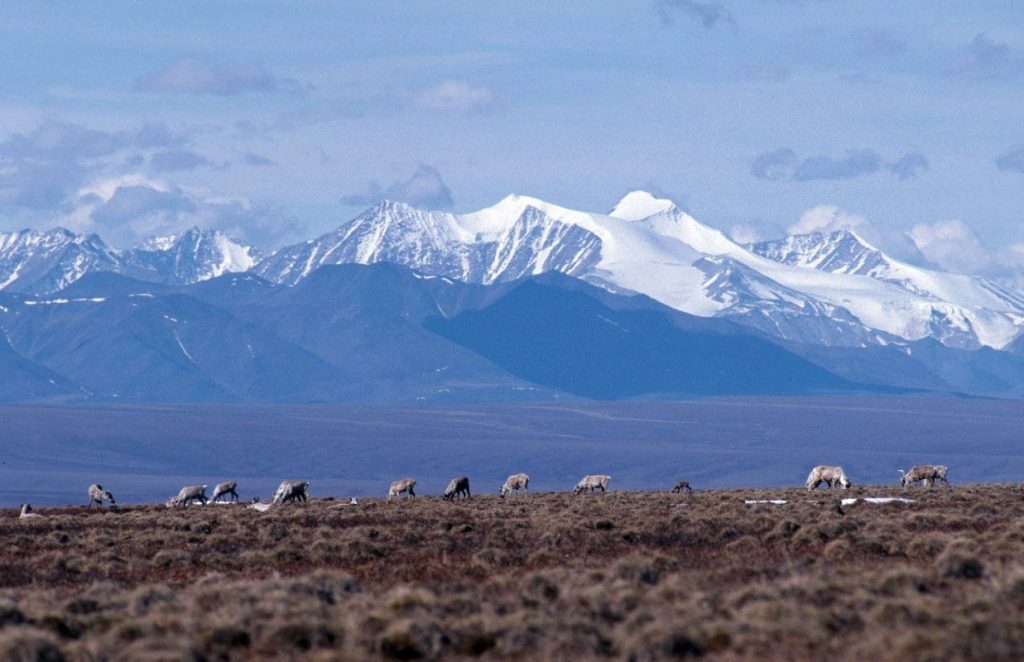The caribou herd in Alaska’s Arctic refuge has grown to an all-time population high
The caribou herd in Alaska and Yukon best known for its association with the Arctic National Wildlife Refuge is thriving, Alaska officials reported.

The caribou herd best known for its association with the Arctic National Wildlife Refuge is thriving, with its population at a record high, Alaska officials reported.
The Porcupine Caribou Herd, which roams the territory between northeast Alaska and the far northwest corner of Canada, now holds 218,000 animals, the herd’s highest number since population monitoring started in the 1970s, the Alaska Department of Fish and Game said.
The herd has been growing at a rate of 3 percent to 4 percent annually since 2010, the department reported. The previous peak was 178,000 animals in 1989, the department said.
Numbers fell to 123,000 in 2001 but have been rising since then, the department said.
The population census is the product of a joint survey conducted by the Alaska Department of Fish and Game and the Yukon Department of Environment. The Porcupine herd’s 80,000-square-mile range includes northeastern Alaska, northern Yukon and parts of Canada’s Northwest Territory, and the herd is co-managed by Alaska and Canada.
New technology that provides detailed digital aerial photographs has provided a much more accurate count than those done in past years, the Department of Fish and Game said.
“Caribou were aggregated well for the survey and we accounted for all of the radiocollared animals in the herd, which means we likely didn’t miss many caribou,” Jason Caikoski, the department’s assistant area biologist for northeast Alaska, said in a statement.
The increase is attributed to better reproductive success.
In 2017, there were 72 calves to every 100 cows, far more than the average rate of 58, the department said in a report on the herd. Eighty-four percent of calves survived their first month, compared to the herd’s average 72 percent survival rate for newborn calves. Eighty-eight percent of radiocollared female were pregnant, compared to the average of 81 percent for collared females in the herd.
The herd, named for the Porcupine River, is best known for its use of the wildlife refuge’s coastal plain as its calving grounds. That is the site that the Trump administration and
Republican leaders in Congress are seeking to open to oil drilling; the newly signed federal tax bill authorizes two oil lease sales in the coastal plain.
The Porcupine herd’s use of the refuge coastal plain has long been an issue in the debate over ANWR drilling.
The Gwich’in Steering Committee, representing Gwich’in Athabascans from northeast Alaska and neighboring areas of Canada, refers to the coastal plain as “Iizhik Gwats’an Gwandaii Goodlit,” translating to “the sacred place where life begins.” Gwich’in traditions and history are linked to caribou hunting.
Drilling supporters point out that the herd has used places outside of the refuge’s 1002 area – the site where oil leasing is planned – for calving.
In 2012 and 2013, the calving occurred mostly in Canada to the east of the refuge, according to the Alaska Department of Fish and Game. In 2017, the herd used a wide area of coastline, including the refuge’s coastal plain but extending beyond it, for spring calving.
The herd also varies its winter range, which is sometimes in Alaska, sometimes in Yukon and sometimes in a region straddling the border, according to the department.
The Porcupine herd is the second largest in Alaska.
The largest remains the Western Arctic Caribou Herd, according to the Department of Fish and Game. The Western Arctic herd population now the number stands at 257,000, a significant rebound from the 201,000 estimated in 2016, the department reported earlier this month. The Western Arctic herd numbered 490,000 in 2003, but declined steadily in the following years. Last year, hunting restrictions were imposed.
The increase in numbers is attributable in part to the better technology now used in aerial surveys, department officials said. But better survival of adult females and higher reproduction rates appear to be the key drivers of the population rebound, officials said.
“We believe the superior photo quality has led us to identify and count more calves than we did in the past; however, there is no doubt the herd increased between 2016 and 2017,” wildlife biologist Lincoln Parrett said in a department statement.